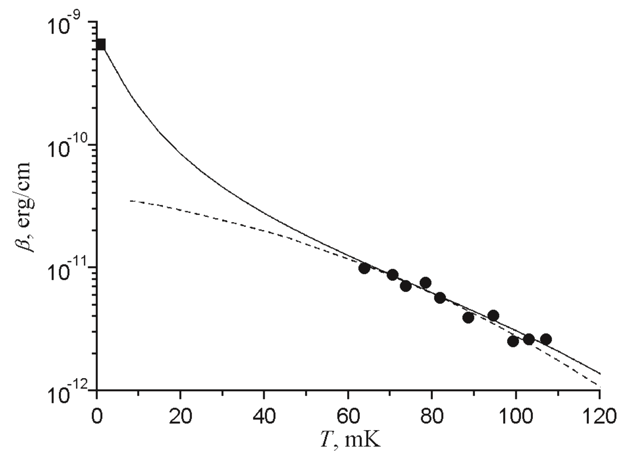
H. Alles, H. Junes, M. Manninen, J. Simpura, and I.A. Todoshchenko
Visitors: S. Balibar and A.Ya. Parshin
Helium crystals represent a good model system in which general properties of crystalline surfaces such as the equilibrium crystal shape, surface phase transitions, and elementary mechanisms of the crystal growth can be studied. In addition, helium crystals reveal several exceptional and surprising phenomena like the crystallization waves which propagate on the superfluid-solid interface. This kind of phenomena are possible because of quantum properties of liquid and solid helium which show up at ultra low temperatures close to the absolute zero.
The crystals are typically recognized by the smooth flat planes – facets – on their surface, which appear in the directions of high-symmetry crystallographic orientations. Generally, the lower the temperature, the more facets should be on the crystal surface. On the surface on helium crystals, due to the small surface energy, the facets are present only in the vicinity of the absolute zero temperature. Therefore, for a long time it was thought that the large zero-point energy of helium atoms will prevent the observations of more than just a few different types of facets on helium crystals. However, we have discovered a few years ago, with our unique low-temperature Fabry-Pérot type of interferometer, that on the surface of 3He crystals there exist at least eleven different types of facets.
As temperature rises and thermal fluctuations increase, the facets should disappear at the successive roughening transition temperatures till crystals become completely rounded. In 3He, no facets have been observed above 0.1 K which is nearly three times lower value than calculated from theory. In order to solve that discrepancy, we have performed careful measurements on the shape of 3He crystals in the temperature range of 0.06…0.11 K and extracted the temperature dependence of the step free energy of facets (see figure). We have also shown that the facets do not show up above 0.1 K because of increasing quantum fluctuations of the liquid-solid interface. Below 0.1 K, paradoxically, the fluctuations become more and more damped due to the Fermi degeneracy of the liquid 3He. From our experimental data in this temperature range we have obtained also the value for the surface tension of 3He crystals and found it to be isotropic, temperature-dependent and in a good agreement with the value measured at higher temperatures by Rolley et al. [Europhys. Lett. 8, 523 (1989)].

Fig. 1. Measured free energy of a step on the (110) facet of a bcc 3He crystal as a function of temperature. Dashed curve is a fit to the theory of renormalization by thermal fluctuations and the solid curve a fit to the generalized renormalization theory which takes into account also quantum fluctuations of the liquid-solid interface.